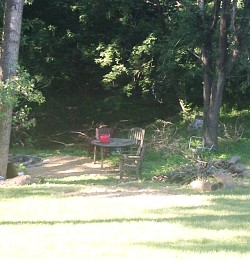DIY Tips: Building a Mini-Greenhouse
 So you want to grow some out of season plants, but you don’t have a lot of room. It’s mini greenhouse (also known as a cold frame) time, and fortunately there are a lot of options to choose from when it comes to construction materials and type. If you’re not too handy with a hammer, a very basic project may meet your needs just fine, while advanced players can explore larger and more complicated structures.
So you want to grow some out of season plants, but you don’t have a lot of room. It’s mini greenhouse (also known as a cold frame) time, and fortunately there are a lot of options to choose from when it comes to construction materials and type. If you’re not too handy with a hammer, a very basic project may meet your needs just fine, while advanced players can explore larger and more complicated structures.
Benefits of Greenhouses
I talked to farmer Gowan Batist, a Bay-area gardener, about greenhouses, which happen to be one of her passions; she loves seeing miniature greenhouses out in the community, because it means people are working on producing their own food. She notes that greenhouses can be fantastic season extenders, allowing you to plant earlier and harvest later, and they can also provide protection for fragile plants:
“Having season extenders helps to have produce either sooner or later than would otherwise be allowed by the weather. Having cover in the spring allows you to plant out seedlings early and therefore harvest early, and having cover in the fall allows you to plant seedlings later and have a fresh harvest when it would be too cold otherwise.”
A Few Caveats
There are, however, some cautions to be aware of before you get started. All that desired moisture and heat can also make a breeding ground for fungi and other problems, so you need to make sure to water greenhouse plants directly at the soil level, using a system like drip irrigation (which you can improvise with a drip hose or some PVC pipe) instead of overhead spray. Make sure you have good ventilation, and keep an eye on temperatures, because if your greenhouse gets too hot, your plants will be very unhappy.
The Most Basic Mini Greenhouse
For the most basic mini greenhouse, try building something directly over your garden beds. Batist explains that “an easy way to make your own mini greenhouse over a raised bed is to hit the hardware store: PVC is bendable and cheap and very easy to cut and put together using elbow and T joints. You can either make a frame with a square PVC bottom that fits over your raised bed with hoops arching over the top, which is slightly more cutting and measuring but means you have a removable, modular unit, or you can simply take lengths of thin plastic pipe and bend it into arches across your bed.”
Your mini greenhouse can be covered in painter’s plastic if you don’t want to spend the extra money on greenhouse plastic, or you can use a non-woven heavy fabric known as Remay or Agribon. This fabric cover allows moisture to wick through to the plants below while providing shade and insulation from temperature extremes. Using clips, you can change your cover depending on the season or remove it entirely if the weather is fair.
Different Types of Frames
The same frame concept can be extended, for people with more carpentry skills. You could build a structure tall enough to stand or kneel in, with more room for plants and space for sprouting tables and supplies. Be sure to check with local building regulations; usually structures below a certain height don’t require permits and inspections, but if your mini greenhouse starts to reach macro size, it might need to comply with some municipal or county regulations.
Micro Mini Greenhouses
Individual plants can be shielded with a mini greenhouse of their own using very basic measures: Use sticks or poles to create a frame and drape it in plastic or fabric. You can also use something like a tomato cage or used piece of fencing. In all cases, make sure the greenhouse material doesn’t touch any of the leaves of the plant, because it could breed mold.
Repurposed-Window Greenhouse
For something a little cuter that requires more work, you can think about using old windows to make a mini greenhouse. Make sure they’re supported with a sturdy frame, and consider putting some of the windows or individual panes on hinges for ventilation control. Batist warns to “be careful of lead paint in the frames and the shatter danger of old glass.”
Build a Permanent Mini Greenhouse
Finally, Batist suggests building a sun porch or lean-to on the side of your house. This requires more planning and work but can result in a useful mini greenhouse that also enhances the value of your home. For basic structures, use a frame of lightweight wood and rigid plastic. If you want something more durable and attractive, install panes of glass, but make sure you’re prepared to handle a bigger construction project. Glass requires much more care and support during construction because of its weight and fragility.
If you'd like a professional to handle your greenhouse project, find a reliable carpenter near you.
Updated August 28, 2018.
Looking for a Pro? Call us (866) 441-6648

Landscaping Average Costs
Landscapers Experiences

I Built A Concrete Retaining Wall As A Defense Against El Nino

New Low-Maintenance Landscaping To Update Our Yard



